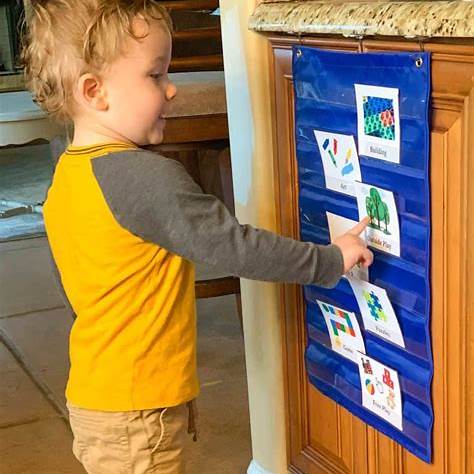Routines help children with ADHD feel grounded, prepared, and calm. But creating routines that actually work—ones your child will follow without daily battles—requires flexibility, creativity, and patience. The key is to build structure around their brain, not in spite of it.
If I can do it, you can too!
Why Routines Help ADHD Brains
Children with ADHD thrive on predictability, but struggle with:
- Transitions and unexpected changes
- Remembering sequences of tasks
- Managing time and emotional regulation
A good routine acts like an external executive function—it supports what the brain has trouble doing on its own.
1. Start With One Routine at a Time
Don’t try to revamp the whole day. Begin with:
- Morning routine
- After-school routine
- Bedtime routine
Build consistency in one area before adding more.
2. Use Visual Schedules
Post routines with icons, pictures, or written steps in order:
- Wake up
- Brush teeth
- Get dressed
- Eat breakfast
- Pack backpack
Place the schedule where your child can see and use it.
3. Include Predictable Transitions
Transitions are often the hardest part. Use:
- Timers (visual or auditory)
- Countdown warnings (“5 more minutes, then…”)
- Movement between steps (marching, stretching)
This helps the brain shift gears more easily.
4. Keep Steps Short and Actionable
Instead of “Get ready for bed,” break it down:
- Put on pajamas
- Brush teeth
- Choose a book
- Lights off
Clarity increases cooperation.
5. Build in Breaks or Downtime
After a high-demand task (like homework), add:
- Movement break
- Quiet time with music or drawing
- Outdoor play
Breaks refresh the brain and reduce resistance.
6. Make It Collaborative
Ask your child:
- “What order do you want to do things in?”
- “Where should we hang the checklist?”
- “Do you want to decorate your schedule?”
Involving them builds ownership and reduces pushback.
7. Use Consistent Cues
Associate routines with:
- A song (“Brush your teeth” music)
- A visual signal (light color change)
- A “routine reminder” object (a bell, fidget cue)
The brain begins to connect the cue with the next action.
8. Plan for Flexibility (very important)
Sometimes things go off schedule—and that’s okay. Teach your child:
- How to reset
- How to adapt (“We’ll skip step 2 and come back to it.”)
- That routines help us, not trap us
This prevents meltdowns when things don’t go perfectly.
9. Use Positive Reinforcement
Acknowledge every win:
- “You did all your morning steps without reminders!”
- Use stickers, points, or simple praise
Rewarding effort, not just outcome, builds motivation.
10. Review and Adjust Together
Routines should grow with your child. Ask regularly:
- “What’s working?”
- “What feels hard?”
- “Do you want to change anything?”
Flexibility keeps routines fresh and effective.
Final Thought: Routines That Work Are Routines That Fit
You don’t need a rigid, military-style schedule like I was in the beggining. You need a rhythm that honors how your child’s brain works—while guiding them toward confidence, consistency, and independence.
The best routines aren’t just followed—they’re felt. And with the right structure, your child with ADHD can thrive in the flow.
